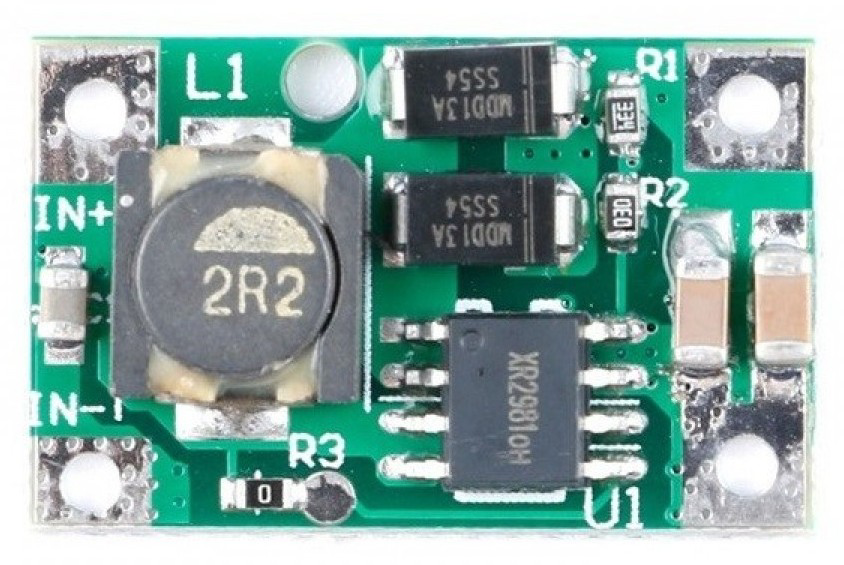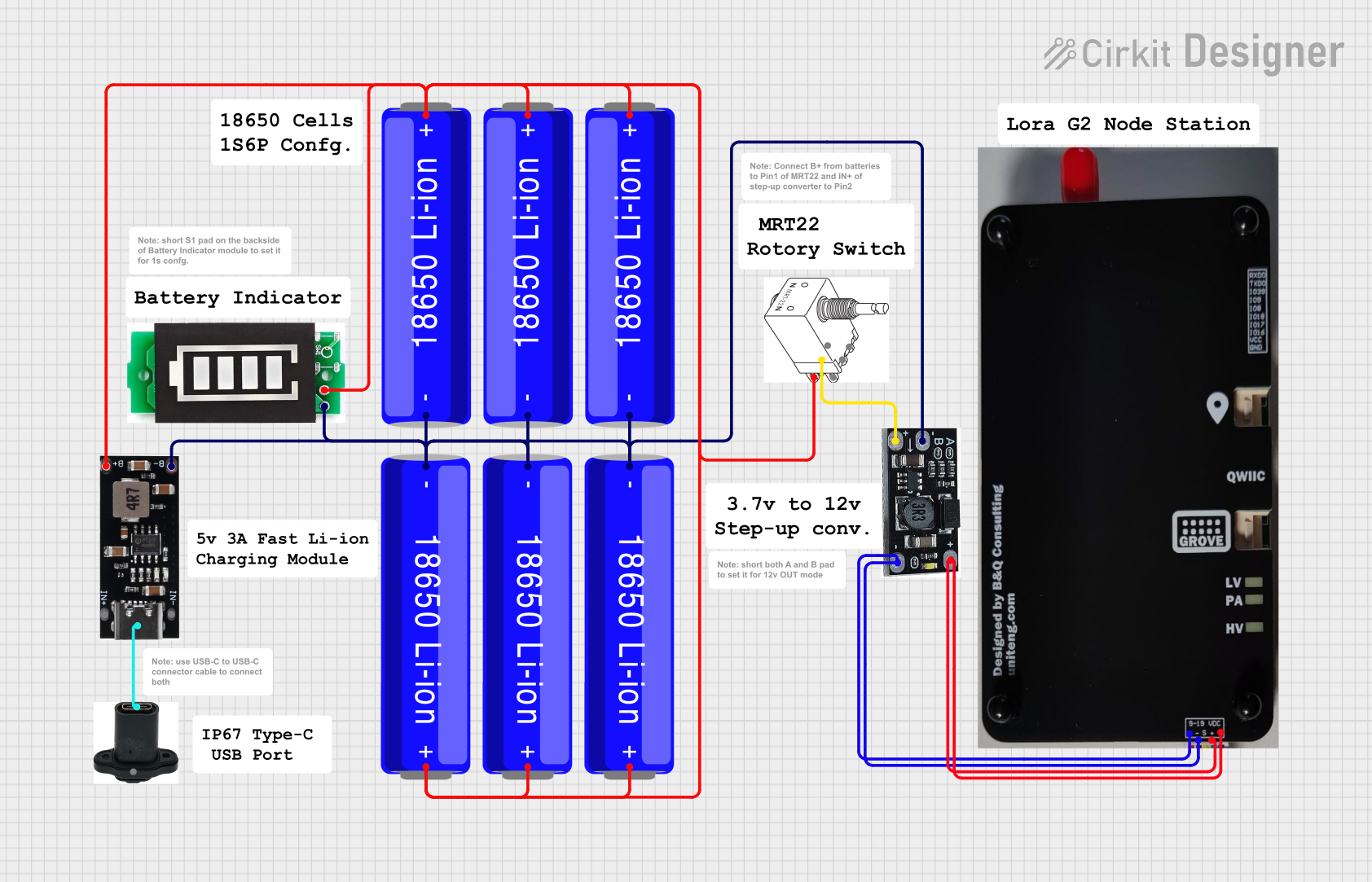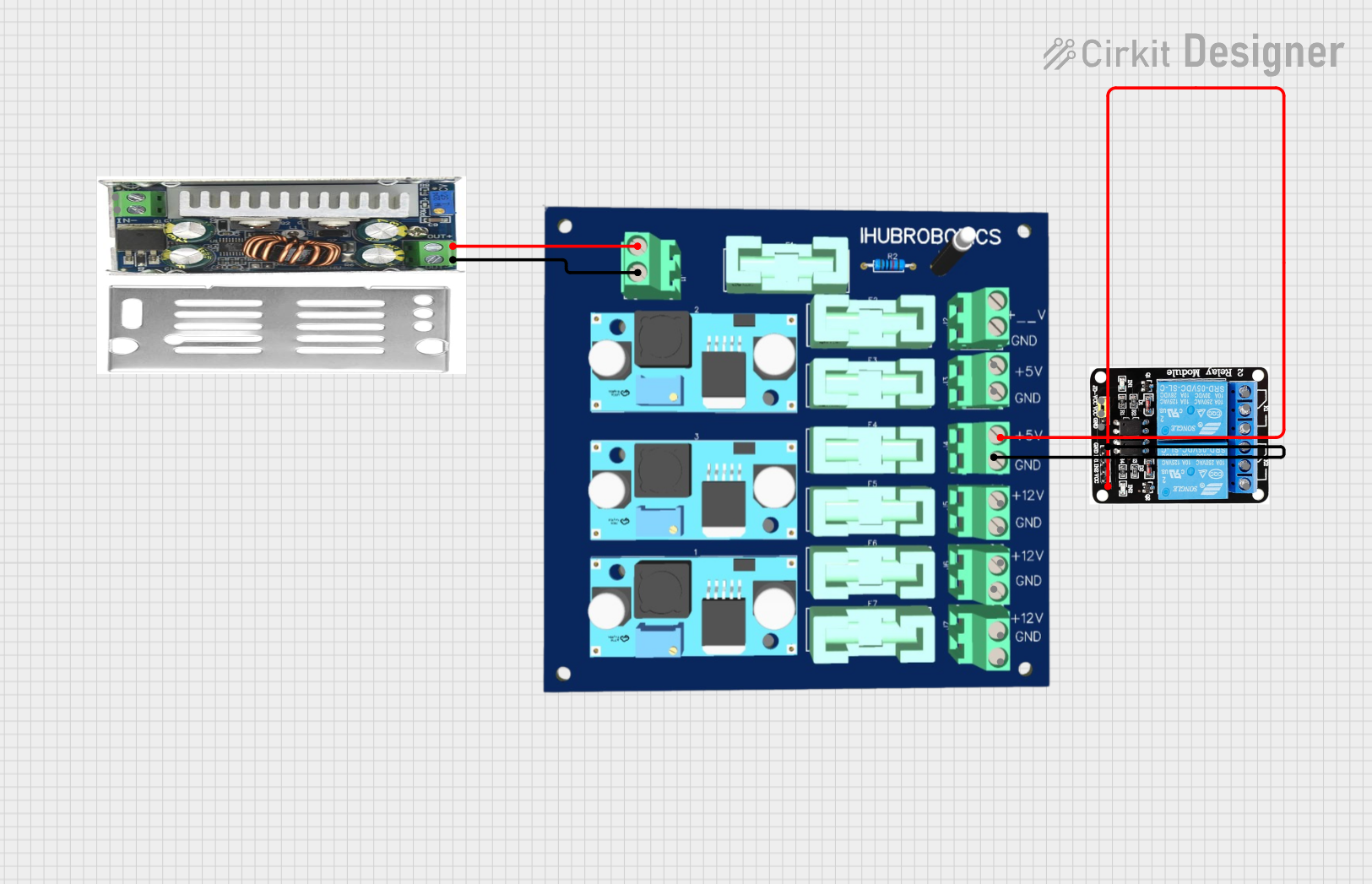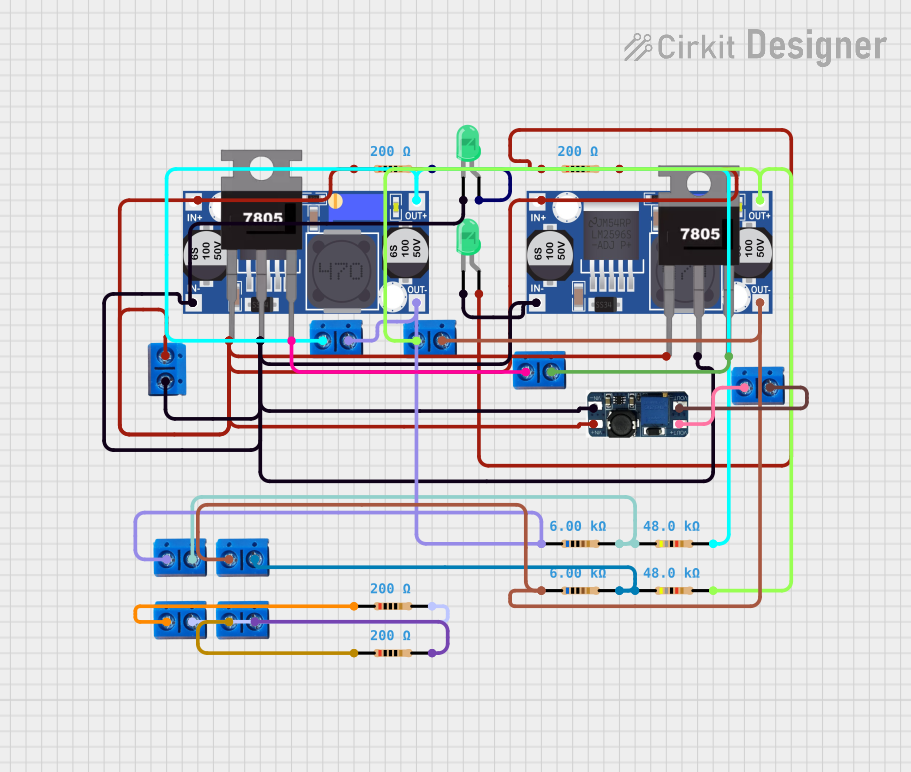
How to Use DC-DC Step-up Boost Converter - 2A - 5V Output: Examples, Pinouts, and Specs

 Design with DC-DC Step-up Boost Converter - 2A - 5V Output in Cirkit Designer
Design with DC-DC Step-up Boost Converter - 2A - 5V Output in Cirkit DesignerIntroduction
The DC-DC Step-up Boost Converter - 2A - 5V Output by TinyTronics is a compact and efficient power management module designed to increase a lower input voltage to a stable 5V output. This boost converter is capable of delivering up to 2A of current, making it ideal for powering USB devices, microcontrollers, and other 5V electronics from lower voltage sources such as batteries.
Explore Projects Built with DC-DC Step-up Boost Converter - 2A - 5V Output

 Open Project in Cirkit Designer
Open Project in Cirkit Designer
 Open Project in Cirkit Designer
Open Project in Cirkit Designer
 Open Project in Cirkit Designer
Open Project in Cirkit Designer
 Open Project in Cirkit Designer
Open Project in Cirkit DesignerExplore Projects Built with DC-DC Step-up Boost Converter - 2A - 5V Output

 Open Project in Cirkit Designer
Open Project in Cirkit Designer
 Open Project in Cirkit Designer
Open Project in Cirkit Designer
 Open Project in Cirkit Designer
Open Project in Cirkit Designer
 Open Project in Cirkit Designer
Open Project in Cirkit DesignerCommon Applications and Use Cases
- Powering 5V devices from 3.7V lithium-ion batteries.
- Boosting voltage in portable electronics and battery-powered systems.
- Supplying power to USB-powered devices.
- Applications in robotics, IoT devices, and embedded systems.
Technical Specifications
Below are the key technical details for the DC-DC Step-up Boost Converter - 2A - 5V Output:
| Parameter | Value |
|---|---|
| Manufacturer | TinyTronics |
| Part ID | DC-DC Step-up Boost Converter - 2A - 5V Output |
| Input Voltage Range | 2V to 24V |
| Output Voltage | 5V (fixed) |
| Maximum Output Current | 2A |
| Efficiency | Up to 92% (depending on load) |
| Dimensions | 22mm x 17mm x 4mm |
| Operating Temperature | -40°C to +85°C |
Pin Configuration and Descriptions
The module has four pins for input and output connections:
| Pin Name | Description |
|---|---|
| VIN+ | Positive input voltage terminal (2V to 24V). |
| VIN- | Negative input voltage terminal (GND). |
| VOUT+ | Positive output voltage terminal (fixed 5V). |
| VOUT- | Negative output voltage terminal (GND). |
Usage Instructions
How to Use the Component in a Circuit
Connect the Input Voltage:
- Connect the positive terminal of your power source (e.g., battery) to the
VIN+pin. - Connect the negative terminal of your power source to the
VIN-pin. - Ensure the input voltage is within the range of 2V to 24V.
- Connect the positive terminal of your power source (e.g., battery) to the
Connect the Output Load:
- Connect the positive terminal of your load (e.g., a 5V device) to the
VOUT+pin. - Connect the negative terminal of your load to the
VOUT-pin.
- Connect the positive terminal of your load (e.g., a 5V device) to the
Power On:
- Once connected, the module will automatically boost the input voltage to a stable 5V output.
Verify Output:
- Use a multimeter to confirm the output voltage is 5V before connecting sensitive devices.
Important Considerations and Best Practices
- Input Voltage Range: Ensure the input voltage does not exceed 24V or drop below 2V to avoid damaging the module.
- Current Limitations: The module can deliver up to 2A at 5V. Exceeding this limit may cause overheating or failure.
- Heat Dissipation: For high-current applications, ensure proper ventilation or add a heatsink to prevent overheating.
- Polarity Protection: Double-check the polarity of your connections to avoid damaging the module.
Example: Using with an Arduino UNO
The boost converter can be used to power an Arduino UNO from a 3.7V lithium-ion battery. Below is an example circuit and code:
Circuit Connections
- Connect the battery's positive terminal to
VIN+and negative terminal toVIN-. - Connect
VOUT+to the Arduino UNO's5Vpin. - Connect
VOUT-to the Arduino UNO'sGNDpin.
Example Code
// Example code to blink an LED on Arduino UNO powered by the boost converter
// Ensure the boost converter is providing a stable 5V to the Arduino UNO.
void setup() {
pinMode(13, OUTPUT); // Set pin 13 as an output for the onboard LED
}
void loop() {
digitalWrite(13, HIGH); // Turn the LED on
delay(1000); // Wait for 1 second
digitalWrite(13, LOW); // Turn the LED off
delay(1000); // Wait for 1 second
}
Troubleshooting and FAQs
Common Issues and Solutions
No Output Voltage:
- Cause: Incorrect input connections or insufficient input voltage.
- Solution: Verify the input voltage is within the 2V to 24V range and check the polarity of the connections.
Overheating:
- Cause: Excessive current draw or poor ventilation.
- Solution: Ensure the load does not exceed 2A and provide adequate cooling.
Output Voltage Not Stable:
- Cause: Input voltage too low or fluctuating.
- Solution: Use a stable power source and ensure the input voltage is at least 2V.
Device Not Powering On:
- Cause: Faulty connections or damaged module.
- Solution: Check all connections and replace the module if necessary.
FAQs
Q: Can I adjust the output voltage?
A: No, the output voltage is fixed at 5V and cannot be adjusted.
Q: Can I use this module with a solar panel?
A: Yes, as long as the solar panel's output voltage is within the 2V to 24V range.
Q: Is the module protected against reverse polarity?
A: No, the module does not have built-in reverse polarity protection. Always double-check your connections.
Q: What is the efficiency of the module?
A: The efficiency can reach up to 92%, depending on the input voltage and load conditions.